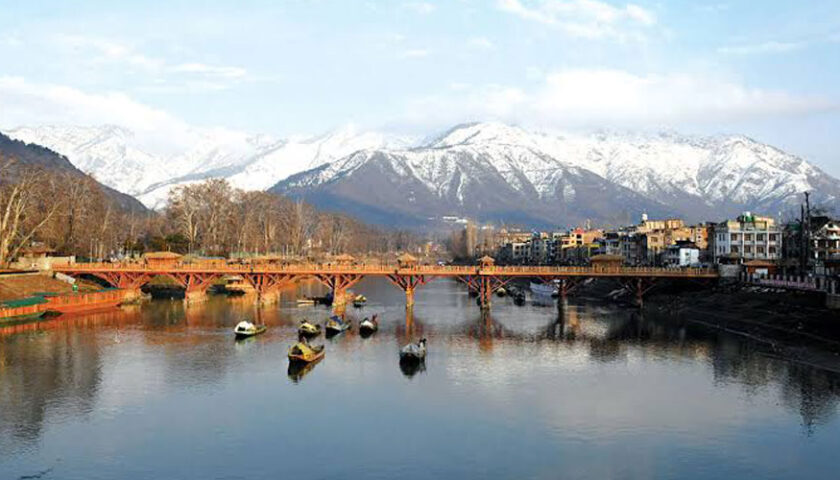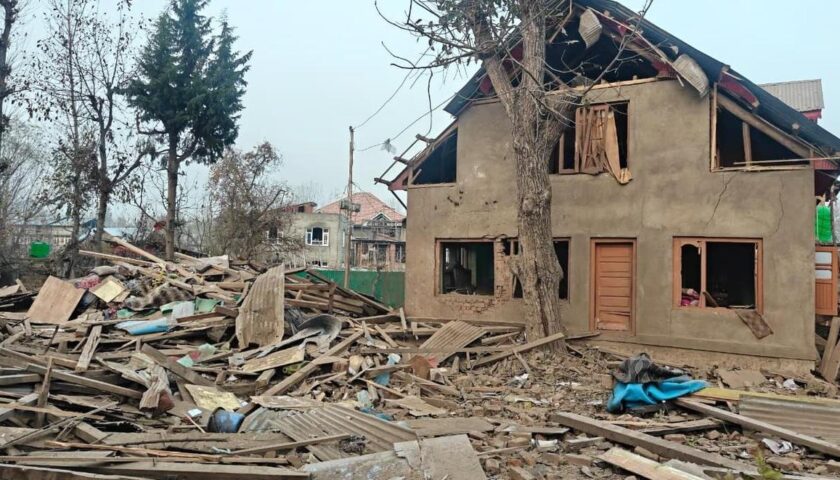Kashmir Valley to See 20% Peak-Hour Power Surcharge: KPDCL Submits Proposal to JERC
By: Javid Amin | 20 November 2025
What the Proposal Says
The Kashmir Power Distribution Corporation Limited (KPDCL) has submitted to the Joint Electricity Regulatory Commission (JERC) a proposal to impose a 20 % surcharge on electricity consumption during defined “peak hours” in the Kashmir Valley. The peak windows proposed are 6:00 AM–10:00 AM (morning) and 6:00 PM–10:00 PM (evening).
According to KPDCL, the objective is to manage load, deter excessive use during high-demand intervals, and thereby reduce strain on the power grid—especially critical as winter approaches and consumption spikes.
Why This Matters
-
Consumer Impact: Households and commercial units may find their electricity bills rising if they use major appliances (heaters, geysers, heavy loads) during the surcharge windows.
-
Supply Reliability: By shifting or reducing load in peak slots, KPDCL aims to enhance grid stability and reduce unscheduled outages.
-
Policy Trend: Time-of-day tariffs (differential pricing for peak and off-peak) are being increasingly adopted globally and in parts of India as utilities manage variable demand.
-
Winter Context: In Kashmir, winter heating needs cause sharp demand spikes. Introducing surcharge signals the utility’s effort to prepare the network ahead of peak usage.
Wider Context and Underlying Pressures
-
Demand Surge: As winter sets in, the Valley sees increased electricity draw for heating, lighting, water heating and other systems.
-
Revenue & Cost Gap: KPDCL faces challenges such as high purchase costs of power, technical & commercial losses and limited ability to raise tariffs across the board. A surcharge during peak hours offers a way to ease the burden without blanket hikes.
-
Behavioural Change: Surcharges aim to incentivize users to shift heavy consumption (laundry, oven use, large appliances) to off-peak hours (late night, midday) where feasible.
-
Regulatory Route: The proposal is subject to approval by JERC. Only after regulatory sanction will the surcharge become enforceable. A public hearing and stakeholder feedback may be required.
Potential Issues and Stakeholder Concerns
-
Affordability: Low-income households may be disproportionately impacted if they cannot shift usage out of peak windows (especially for heating).
-
Clarity & Communication: Precision in identifying appliances, usage behaviour and user education will be important so that consumers understand how to adapt and avoid surprise bills.
-
Implementation Mechanics: Smart metering, accurate tracking of time-of-use, and grid metering infrastructure implementation must be in place for surcharge to be fair and enforceable.
-
Public Reaction: Any perception of unfair cost burden or mis-timed surcharge may provoke backlash, particularly if supply reliability isn’t visibly improved.
What Comes Next?
-
Regulatory Review: JERC will examine the proposal, likely hold consultations, weigh the consumer impact vs. utility benefits, and decide on approval, modification or rejection.
-
Stakeholder Engagement: KPDCL may need to engage with consumer groups, industry associations, subsidy recipients and residential associations to explain the rationale and help shift usage.
-
Infrastructure Readiness: Time-of-use tariffs often require metering infrastructure (smart or time-based), billing systems capable of separating peak/off-peak loads, and consumer awareness campaigns.
-
Monitoring & Adjustments: If approved, KPDCL will need to monitor whether the surcharge shifts consumption, reduces peak load, improves grid stability—and whether adjustments (timing, percentage surcharge) are needed.
Smart Guide for Kashmir Residents: How to Reduce Your Electricity Bills Under Peak-Hour Surcharge Rules
With the proposed 20% surcharge on electricity use during peak hours (6–10 AM & 6–10 PM), saving money isn’t about cutting power — it’s about shifting when and how you use it. Here’s a step-by-step plan any household can follow:
1️⃣ Shift Heavy Appliances to Non-Peak Hours
Appliances that heat or cool consume the most power. Use them before 6 AM / between 10 AM–6 PM / after 10 PM:
| Avoid during | Use instead |
|---|---|
| Room heaters | Pre-heat rooms early, use warm rugs/curtains |
| Water heaters | Heat water at 5–6 AM or 10 AM–4 PM |
| Washing machines | After 10 PM / afternoon |
| Electric cooking appliances | Pre-prep food or use gas early |
💡 Tip: Keep geysers on only 15–20 minutes before use.
2️⃣ Know Your Appliance Power Cost
If an appliance runs 1 hour at peak time, the cost rises by 20%.
Prioritize shifting these:
| Appliance | Avg Watts/hr | Cost Impact (High) |
|---|---|---|
| Immersion rod | 1500–2000W | 🚨🚨🚨 |
| Room heater | 1500–2000W | 🚨🚨🚨 |
| Water heater | 2000–3000W | 🚨🚨🚨 |
| Iron | 1000–1500W | 🚨🚨 |
| Microwave / Air fryer | 1200–2000W | 🚨🚨 |
💸 Heating devices = highest bill shockers
3️⃣ Cut Down Idle Consumption
Even “off” appliances draw power (Standby Mode).
✔ Unplug TVs, routers, chargers
✔ Use smart strips / master-switch boards
✔ Turn off inverters & solar during stable supply (if applicable)
Saves 2–5% monthly automatically.
4️⃣ Reduce Heat Loss From Rooms
The warmer your room stays naturally, the less heating you need.
✔ Seal window gaps
✔ Use carpets & curtains
✔ Wear layered clothing
✔ Move furniture away from cold walls
✔ Keep one common warm room for the family
Result: 30–50% less heater usage
5️⃣ Switch to Efficiency
| Old Appliance | Replace With | Savings |
|---|---|---|
| Incandescent/CFL bulbs | LED | 70–85% |
| Coil heaters | Oil-filled / PTC heaters | 20–35% |
| Old fridge | Energy-rated fridge | 15–30% |
One-time investment — long-term savings.
6️⃣ Smarter Cooking = Lower Bills
✔ Boil water once & fill thermos
✔ Use lids while cooking
✔ Small appliances like induction use less if used properly
✔ Meal prep in daylight hours
7️⃣ Family Coordination = Fewer Peak Hours
Create a home energy timetable:
| Activity | Best time |
|---|---|
| Bathing | Early morning pre-6AM or afternoon |
| Laundry | After 10PM |
| Ironing clothes | Afternoon |
| Entertainment (TV) | Afternoons / late evenings |
Small changes = Big savings
Quick Checklist to Keep Bills Low
-
☐ Turn off heaters/geysers during 6–10 AM & 6–10 PM
-
☐ Use blankets instead of heaters when possible
-
☐ Charge phone/laptop at night
-
☐ Insulate windows and doors
-
☐ Track usage on smart meters if enabled
Example Savings for a Family
If you use a 1500W heater for 4 hrs/day during peak:
➡️ Adds ~₹450–₹700/month with surcharge
Shift 2 hours outside peak → ₹225–₹350 saved
Do this with geysers + heater + washing =
₹1,200–₹2,000/month savings 🌟
Conclusion
KPDCL’s proposal to impose a 20% surcharge on electricity used during morning and evening peak hours in the Kashmir Valley reflects a proactive attempt to manage demand and strengthen the power supply system ahead of winter. While technically feasible and policy-aligned with modern utility practices, its success will depend on regulatory approval, robust implementation, clear communication and equitable impact mitigation, particularly for vulnerable households.
The coming weeks will determine if this measure becomes a smart load-management tool or stirs consumer discontent over rising electricity costs.




